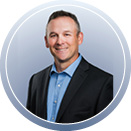RATIO
|
FORMULA |
HOW TO ANALYZE |
|
Accounts Receivable Turnover
|
This ratio measures how your company is managing collections.
|
Net Annual Credit Sales / Average Accounts Receivable
|
A higher rate means your customers are paying their bills quickly.
|
|
Current Ratio
|
This liquidity ratio provides stakeholders with information regarding a company's ability to meet its short-term financial obligations. It is used by creditors and lenders when credit needs to be extended.
|
Current Assets / Current Liabilities
|
The higher the ratio, the more likely the company can timely pay off its obligations.
|
|
Cash Flow Margin
|
This ratio helps show the relationship between cash generated by operations and sales. It is a trusted metric of a company's profitability and efficiency, as well as earnings quality.
|
Operating Cash Flow / Net Sales
|
The higher the percentage, the more ability you have to convert sales to cash flow.
|
|
Days Payable Outstanding (DPO)
|
This ratio indicates how well the company is managing cash flow. It shows the average time it takes to pay bills and invoices to creditors.
|
Days Payable Outstanding = Average Accounts Payable / Cost of Goods Sold x Number of Days in the Accounting Period
Average Accounts Payable = Accounts Payable Balance at the Beginning of the Period - Ending Accounts Payable Balance / 2
|
A higher DPO indicates a longer time to pay bills, which can be advantageous if the company is using the funds until they are due to creditors. However, a high DPO could also be a red flag that the company is unable to pay bills on time.
|
|
Debt Service Ratio
|
This ratio indicates the ability to repay all debt obligations with operating income. Debt ratios indicate solvency as it measures total liabilities as a percentage of total assets. Essentially, this ratio indicates the ability to pay off liabilities with assets.
|
Total Debt / Total Assets
|
A lower debt ratio indicates a more stable business. Each industry has its own benchmarks for debt, but .5 is considered reasonable as it indicates that the liabilities are only 50% of total assets. This means that creditors only own half of the company assets and the shareholders own the other half.
|
|
Gross Profit Margin
|
Indicates how much of your revenue is profit after expenses are subtracted. It should be large enough to cover your fixed (operating) expenses. This is an indicator of how good a company is at creating a service compared to the competition.
|
Net Sales - Cost of Goods Sold / Net Sales
|
Without an adequate gross margin, a company cannot pay for its operating expenses. In general, a company's gross profit margin should be stable unless there have been changes to the company's business model.
|
|
Inventory Turnover Ratio
|
This ratio is a measure of how the company is generating sales from their inventory.
|
Cost of Goods Sold / Average Inventory
|
A high turnover rate could indicate an inadequate inventory level, resulting in stock shortages. A low turnover rate may indicate overstocking.
|
|
Liquidity Ratio
|
This ratio indicates the company's ability to repay short-term creditors with available cash.
|
Liquid Assets / Short-Term Liabilities
|
If the ratio is greater than 1.0, your cash on hand will cover the short-term liabilities.
|
|
Net Profit Margin
|
The percentage of revenue left after all expenses have been deducted from sales. The measurement reveals the amount of profit that a business can extract from its total sales. The net sales part of the equation is gross sales minus all sales deductions, such as sales allowances.
|
Net Profit / Net Sales
|
A high net profit margin indicates that a business is pricing its products correctly and exercising good cost control. Generally, a net profit margin in excess of 10% is considered excellent, though it depends on the industry and the structure of the business.
|
|
Operating Margin
|
This ratio measures how profitable the company is from its operations.
|
Operating Income / Revenue
|
If your operating margin is 0.5, it indicates that there is $0.50 in profit for every dollar of revenue. This ratio does not account for non-operational expenses; it should not be used alone.
|
|
Quick Ratio
|
The quick ratio measures the ability to use quick assets to cover current liabilities.
|
(Cash and Cash Equivalents = Marketable Securities + Accounts Receivable) / Current Liabilities
|
A company with a ratio less than 1.0 cannot quickly pay back its current liabilities.
|
|
Return on Total Assets
|
This ratio shows the company's net profit in relation to its assets value.
|
Net Income / Average Total Assets
|
The ratio is often used by financial institutions when considering a loan for your company. It indicates how effectively the company uses the money to secure assets.
|

